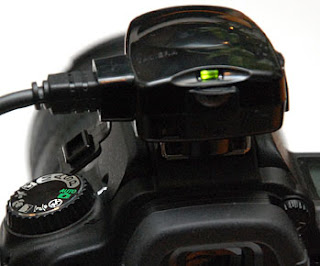The Cyber-shot DSC-T70 slaps a 3 inch touch screen on the back of a slim, stylish camera body that houses an 8.1 megapixel CCD imaging sensor and a 3x optical, 38mm-114mm f/3.5-f/4.3 Carl Zeiss Vario Tessar zoom lens with optical image stabilization. When you've got such a small camera body, there's not a whole lot you can do with design, but Sony has managed to evolve the T-series design while keeping the line's sleek, elegant look.
The T70 sports a much thinner sliding lens cover than the T50 did, though it still feels solid and, as in previous models, functions as an on or off switch, though that can be disabled in the menu if you don't want it to. The touch screen doesn't leave much room for hard buttons, and indeed, the only buttons on the camera are on the top power and playback buttons sit to the left of the shutter, while a side to side zoom slider is on the right of the shutter button.
Not only is this zoom slider downright tiny, but its placement makes it prone to accidental nudges that can ruin your framing just as you're about to press the shutter. Sony probably should have tried to fit a zoom rocker on the back, just above the right hand corner of the screen, or at least put the slider to the left of the shutter to help prevent accidents, though I wouldn't want them to move the shutter button too far to the right, either.
The layout and overall organization of the touch screen controls and menus aren't bad. Sony uses the corners to give you access to deeper menus, while icons along the sides let you change commonly used settings, such as exposure compensation, metering, focus, or sensitivity (aka ISO). I was a bit miffed to find that white balance is relegated to the shooting menu even though there is room for it on the right side of the screen.

Despite its nice design, the touch screen doesn't make a very nice interface. The selections tend to be too small to use your finger on them, unless you have long, well-shaped fingernails (this camera's for you, fashionistas), though Sony does include a stylus that can clip onto the camera strap. If you do choose to clip that stylus on, and I highly suggest you do, you might want to tie off a little loop on the end of the strap, so it doesn't slide all over the place. Even with that stylus, the touch screen tended to be unresponsive.
I had to press hard and repeatedly to get it to accept some of my commands, which quickly became frustrating. Also, you have to confirm that you want to access certain menu functions, which slows down the entire process. I assume that this is to prevent accidental changes to these settings, but back when I had physical buttons to press, this was never an issue. Like most cameras these days, the DSC-T70 includes face detection.
Sony's version can see as many as eight faces in the scene and uses them to determine focus and exposure. The Smile Shutter feature expands on face detection by first locating a face and then waiting for that face to smile before snapping a picture. To use the feature, you have to enter the Smile Shutter scene mode, then press the shutter button, point at a face and wait for it to smile, and the camera will take a picture.
The camera will wait for the face to smile again and shoot another, or you can press the shutter button again and it will exit the scene mode. Some people that I showed this feature to found it a little confusing, since the camera typically waits for the face to stop smiling and then smile again before snapping a second picture. It wasn't too intuitive to most people that you'd have to stop smiling, then smile again before the camera would take a second picture. If you find the feature unresponsive, there's a smile level adjustment in the setup menu, though I did fine by leaving it on the medium setting.
 The bad
The bad 









































